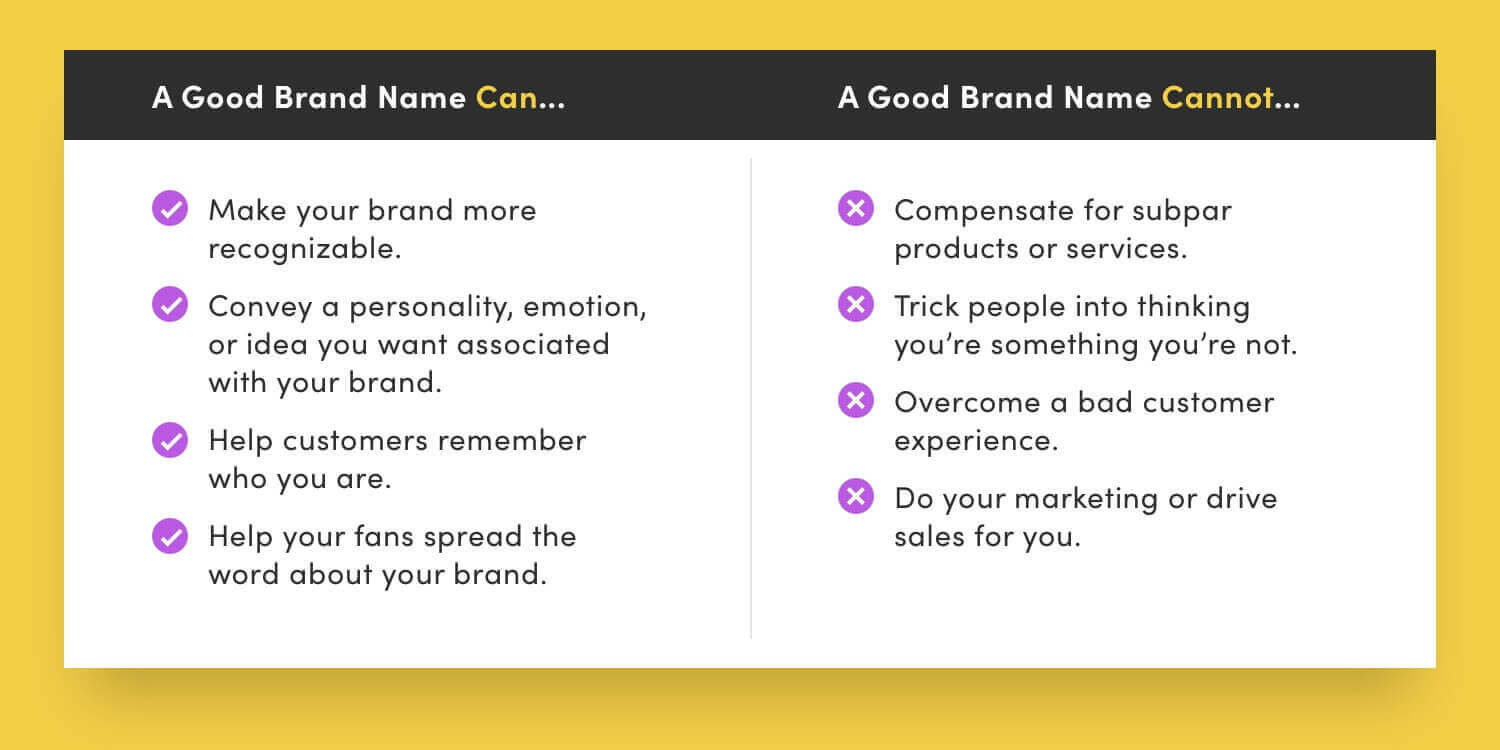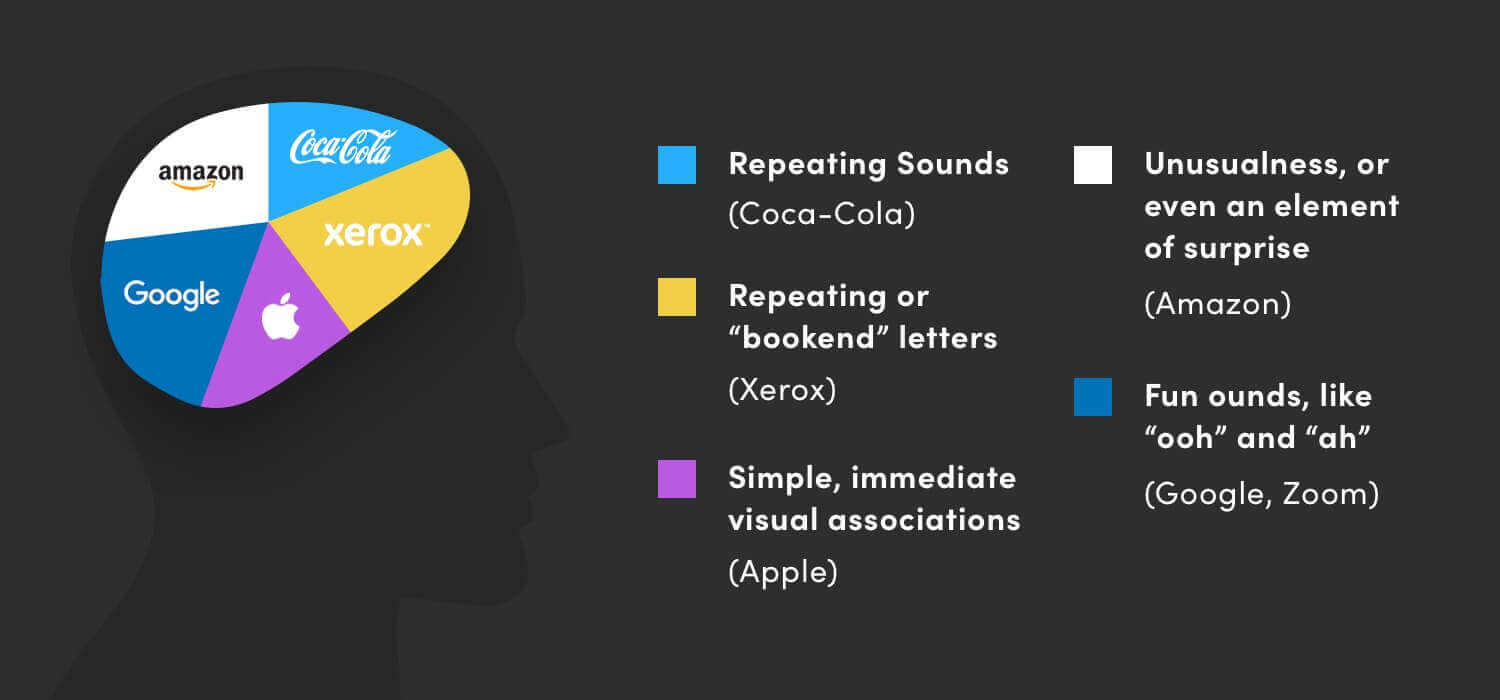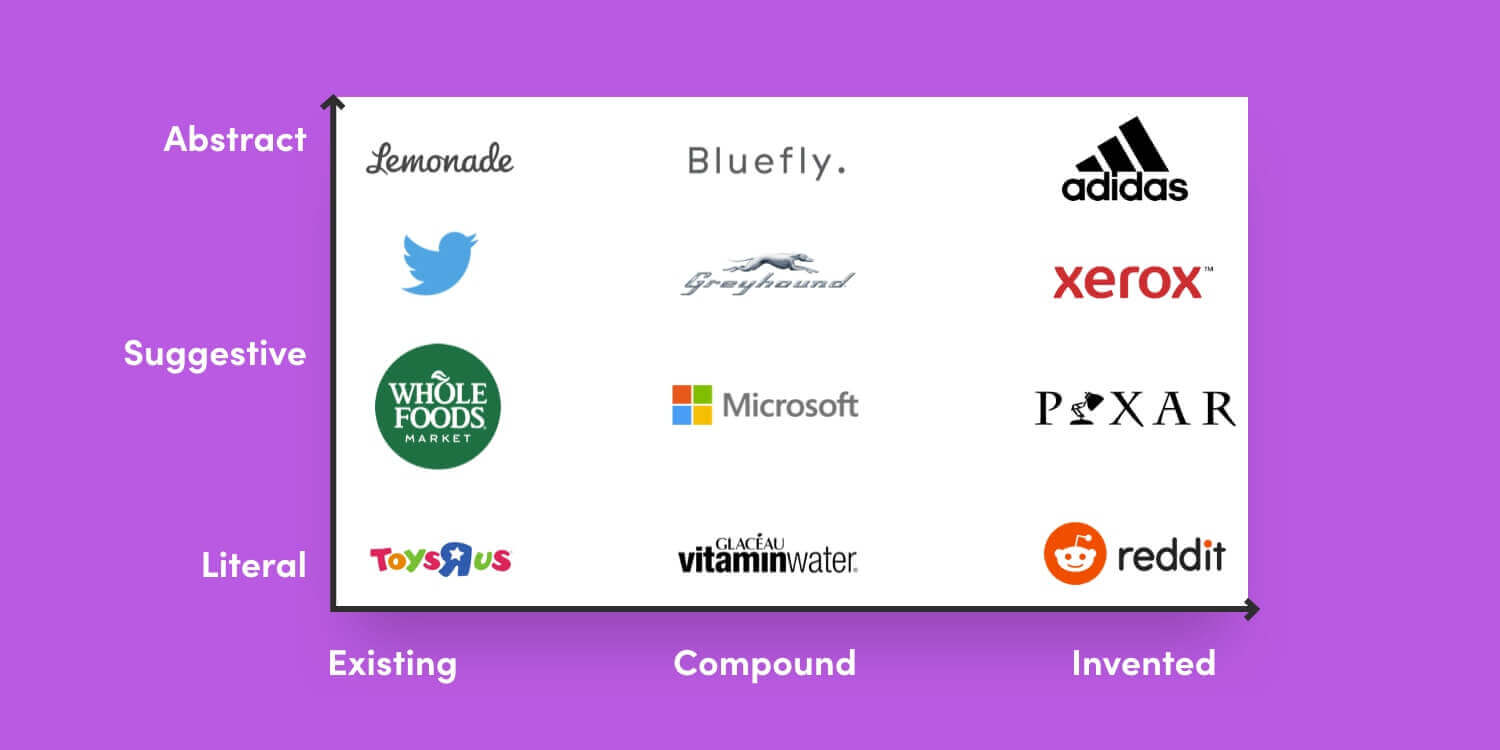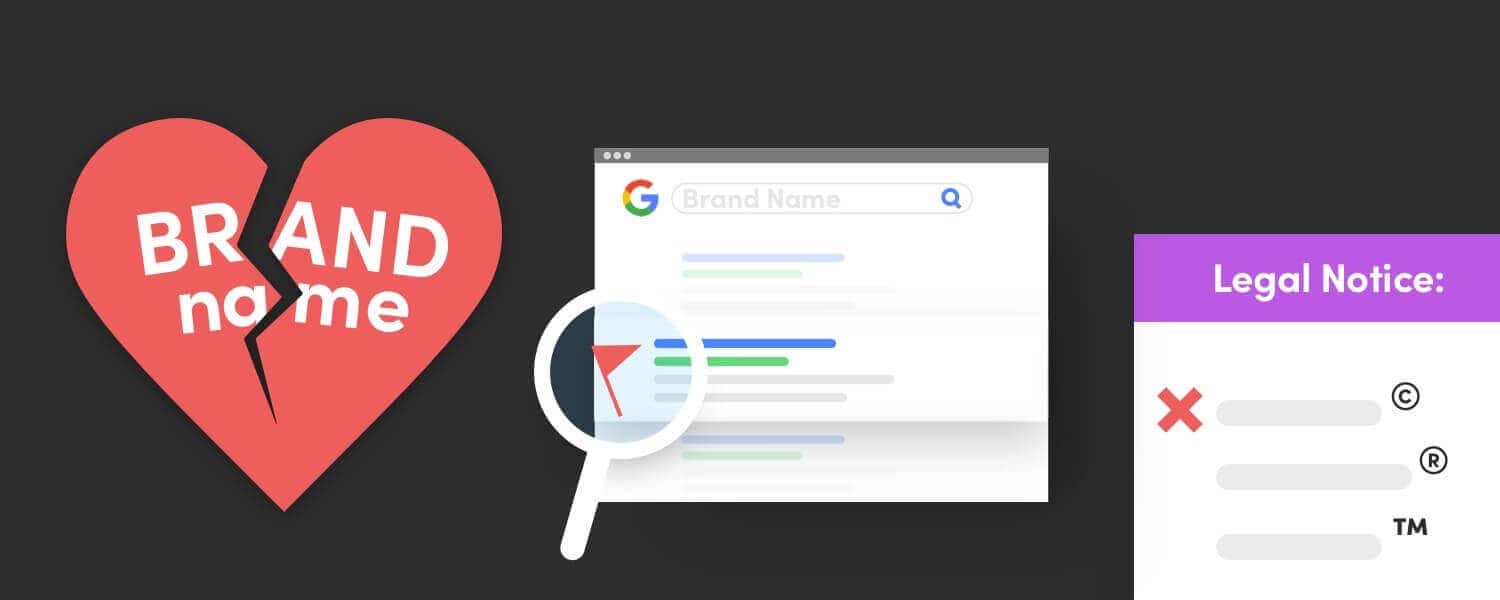So, you’re launching a business! (Or it’s time for a rebrand.) You’ve done the research, you’ve got the plan, you know your market — all you need is the perfect name.
Gulp.
Don’t worry. Our brand strategy team has named dozens of brands over the years, and we have some good news:
Creating the perfect name for your brand is a lot easier than you think — and we’re here to share a 5-step process anyone can follow to land on a great brand name in under a day.*
1. Do Your Research
2. Establish Guardrails
3. Brainstorm
4. Play Time!
5. Run the Litmus Test
* Yes, you really can name your brand in less than a day. The caveat is that the steps you need to take after you think of your name can take quite a bit longer, and you may find yourself back at the drawing board more than once before you can finalize a name. We’re going to talk you through all that, too.
What’s In a (Brand) Name?
Brand names play an essential role in the relationship between companies and their customers. Your company’s name is one of the first things your audience experiences when they encounter your brand — and first impressions have a huge impact on whether or not people will go on to learn, try, buy, and spread the word about your brand.
With that said, it’s a two-way street: Your name helps define your brand, but your brand also defines your name.
The total experience of your brand will ultimately determine how people think and feel about your brand’s name. This experience includes things like:
- Visual identity
- Website
- Ads
- Videos
- Packaging
- Product design
- Customer service
- Physical location or store
- And any other brand touchpoints
In other words, your name matters — but not as much as the totality of your brand experience.
What Makes a Good Brand Name?
The qualities of a “good” brand name are extremely subjective. Is “Amazon” an inherently good name, or has the company just done an amazing job at branding, positioning, and business strategy? How about “Apple,” “Google,” or “Nike?”
With super-established brands like these, it’s tough to separate what we think of their names from how we feel about the brands as a whole. So, how do we bring some objectivity to the process of evaluating brand names?
It turns out that most strong brand names have a few defining characteristics in common. They are:
- Memorable
- Phonetically pleasing
- Free from unwanted associations
- Easy to spell
- Easy to pronounce
And that’s it!
In today’s world, where it can seem like all the “good” names are already taken, even the best names will have to pass a practical litmus test, which we’ll get to in a bit — but in terms of a name doing the work of establishing a simple idea of value in your audience’s mind, those five characteristics are the gold standard.
Numbers four and five (easy to spell and easy to pronounce) speak for themselves, but it’s worth taking a moment to dive a little deeper into numbers one through three.
- A good brand name is memorable. This one seems super obvious, given that the main purpose of your name is identification and recall. But what makes a name memorable? Once again, a huge budget for advertising, product placement, etc. goes a long way. But even without the big bucks, there are certain qualities that have been proven to help names stick in the human brain. These include:
- A good brand name is phonetically pleasing. This is a fancy way of saying it “sounds nice” and “feels good” to say. Most humans instinctively know the difference between an ugly sound and a pleasing one. Some humans are better at this than others. (Hello, Shakespeare.)
Note that there are definitely cultural and linguistic differences when it comes to what sounds pleasing to the ear. If you have an international brand, be sure to run your name by a group that’s as diverse as your target audience.For most English speakers, the following characteristics tend to make a name more pleasant:
-
- Those fun sounds again. (Ooh, ah, ee, oh)
- Rhymes or slant rhymes
- Alliteration
- Simple rhythm or scansion (i.e. What syllable the stress falls on. You can get away with a longer name if it has the right rhythm. Amazon is a great example of this.)
-
- A good brand name is free from unwanted associations. Note that we didn’t say that a good name has positive associations. Naturally, positive associations are great for names. But sometimes more unusual names with complicated, neutral, or no associations at all end up working out wonderfully for a brand. The most important thing is to avoid overtly negative or inappropriate associations. Negative associations are easy to understand, but you also want to be on the lookout for associations you simply don’t want attached to your brand name. As an example, we once worked with a client whose name came from a Sanskrit word. It carried a positive association for them, but over time they found that people assumed they were based in India. That would be fine, except that they were a regional brand trying to capture a local audience in New England. We changed their name to something more relevant to their target audience, and business picked up.As with the “phonetically pleasing” rule, this one is hugely culturally inflected, so make sure your name checks out with a broad audience. (We advise our clients to never have a naming committee made up of only men or women, or people of all one race or ethnicity, for example.)
Now that we’ve established the basics of what makes a good brand name, let’s dive into how to create a great name for your brand!
5 Steps to Creating a Great Brand Name
Get your thinking caps out! It’s time to get to work. What follows is a framework for generating and harnessing creativity to come up with a brand name you (and your audience) will love.
Step 1: Do Your Research
“Do your research” would make a great tattoo for anyone in the brand strategy business. That’s because you shouldn’t make a move as a brand without checking out the competition first. This is especially important when it comes to naming your brand. It’s not just about avoiding names that are already taken. (We’ll get to that when we cover our litmus test.) It’s about understanding the competitive landscape so you can create a name that stands out from the crowd.
Make a list of your competitors, and ask yourself these questions about each name:
- What type of name is it?*
- What’s the name’s personality or “feeling”?
- What associations does the name have?
* There’s a ton of information out there about different types of brand names. Portmanteau names, wordplay names, lexical names, evocative names, blah blah blah. You can ignore it all, and assess names based on where they fall on two simple axes:
- Literal to abstract
- Existing to invented
Here’s an example of a name-type matrix to help you understand:
Similarly, you can place names on a range based on personality. That might look something like this:
When it comes to associations, you want to take note of common themes. For example, if you’re a financial services brand, you might notice a lot of names out there with navigational themes, like Compass, NorthStar, or Helm. When generating name ideas, you probably want to stay away from any super common, overused themes within your market.
Once you’ve done your research, look for opportunities to craft a name that will help you stand out from the crowd. For example, if you see a lot of serious-sounding invented names, and a lot of more fun or playful real-world names, you should consider either a serious real-world name or a fun, playful invented name, depending on the personality of your brand.
Step Two: Establish Guardrails
What is the most-feared bogeyman of the creative process?
The dreaded blank page. (Shudder.)
To get yourself past the blank-page stage, and to create some structure for your brainstorming, it’s helpful to define some creative guardrails before you get started. Here’s how.
Get your team together with a whiteboard or some colored Post-its, and ask everyone to:
- Write down words they don’t want associated with your brand. Don’t just choose obviously negative associations. You want to identify words that might be perfectly great for some brands, just not your brand.For example, a bank might want to avoid words like “young,” “trendy,” or “exciting,” whereas a surf shop might love those associations but want to avoid “established,” “corporate,” and “safe.”
- Write down words they do want associated with your brand. Again, don’t just go for obvious positives. You want a list of words that help define your brand’s competitive difference — ideas that capture what you want your brand to be known for.
- Take your list of “yes” words and have everyone vote for their favorites. Your goal here is to narrow your list to 3-5 concepts that you can use to start generating name ideas.One of our branding clients, a used electric vehicle dealership, wanted to be known for being “fun,” “environmentally friendly,” and “futuristic.” (None of these are common associations with used car dealerships!). We used these words to structure our brainstorming and came up with Green Wave, which combines elements of all three themes.
Once you know your competitive landscape and you have your 3-5 concepts to act as guardrails, you’re ready to start brainstorming!
Step 3: Brainstorm
There are a million different ways to generate name ideas. At Vital, we follow a specific process to make this step more manageable and productive. But first, the ground rules of brainstorming:
- Go at it alone. There will be a time and a place for bouncing ideas off each other. This isn’t it. Instead, send everyone on your naming team off with their own “assignment.”
- Divide and conquer. Take your competitive research and your creative guardrails and give each person on your team a few places to focus. For example, one person might be in charge of the theme of “productivity.” Another person can work on the theme of “connection.” Based on competitive research, both people will avoid names that are corporate or serious.
- There are no bad ideas. J/K, of course there are bad ideas! But for the purpose of brainstorming, every participant should give themselves full permission to come up with truly terrible ideas. Think of it as panning for gold. Scoop as much mud as you can, and the gems will shine through.
Now what?
Get out your pen and paper, or your Google doc, or whatever floats your boat, and get down to business.
Your list should be big enough to cover several pages by now. (If it’s covered in scribbles and doodles, too, all the better.) Go take a walk.
When you come back, look at your lists and circle or highlight any words that might make good names all by themselves, or that seem worth further exploration. Then, move on to the next step.
Step 4: Play Time!
In case you weren’t already having fun, now is the time to really stretch those creative muscles. This can be done solo or in a group. A whiteboard is a great tool, but you can also use paper.
Write down all the words you like from your initial brainstorm and…break them!
- Spell them wrong.
- Mix and match syllables from different words.
- Use real or made-up rhyming words.
- Put two short words together.
- Use onomatopoeia.
- Shorten long words.
- Add prefixes or suffixes to short words.
- Change the part of speech. (E.g. Turn nouns into verbs, verbs into nouns, nouns into adjectives, etc.)
- Use alliteration and other forms of wordplay.
By this time, you most likely have an enormous list of potential names. Real-word names, compound names, invented names. Literal names, evocative names. Fun names, serious names, everywhere-in-between names. Names for days.
All you have to do before moving on to the litmus test is: Choose your favorites. Narrow down your list to around 5-6 name ideas you’d be happy with. For this step, we like making a Google survey and asking a wider group for input. Internal stakeholders are great; people in your target audience are even better. Friends and family are good, too.
At the end of the day, though, the most important thing is that you (and your co-founders or anyone else who really matters) truly like the names you choose — so don’t be afraid to disregard popular opinion to some extent.
Step 5: Run the Litmus Test
- Google it. What comes up on the first page of the search engine results page (SERP)? If it’s:
- A thriving business with a robust online presence (even if it’s not in your industry)
- A business in your industry
- A local business (in your industry or not)
- Something you don’t want associated with your brand
- Something you will never, ever have a chance of beating to the top of the SERP for your branded keywords either locally (if you’re a regional business) or more broadly (if you want a national or international presence)
…I regret to say, you must cross the name off your list.
- Check the URL.
- Is it taken? (It probably is.)
- Who’s it taken by? A professional operation, or something small and rinky-dinky?
- Are there alternative URLs available for a price that’s within your budget?
- Do any of those alternative URLs pass the “radio” test? That is, if you were to advertise your business on the radio, and the spot ended with your URL, would the host have to spell it out, or is it intuitive? Does it contain dashes or other punctuation? Is it more than seven letters long?
…If your URL is taken by a well-established site, and/or no good alternatives exist, again, the name has got to go.
- Run a preliminary trademark search. This is really a trademark attorney’s territory, but you can save yourself some time, money, and heartbreak by doing a preliminary check before sending a name to legal. Visit the TESS database and type in your name. What comes up?
- Too many results to go through them all? You can move on to your lawyer, but don’t get your hopes up.
- Any live trademark for a business anywhere close to your market category? Sorry.
- Any live trademark for a business in your geographical area that’s not in your market category? Ask your lawyer, but proceed with caution.
Let’s say you’ve been through the litmus test and two names survived. That’s great news. (If no names made it, or even just one, go back to your runners up and try again.)
I’ve Got a Name! Now What?
Get excited – but not too excited just yet. You still have a few things to do before you can call it official:
- Register that domain STAT! We cannot stress this enough. There are people who literally make a living scraping search data and registering and then selling domains people seem to be interested in. Don’t let domain trolls happen to you. Register multiple domains, even before you’re sure of your final name.
- Engage the services of a trademark attorney. He or she will be able to determine whether your name is legally ownable.
- Register or incorporate your business under the new name. (You should talk to a lawyer to sort out whether you’ll be an LLC or a corporation, and whether your name will be registered as “doing business as” (DBA) or not.)
- Get social handles for any platforms you intend to be active on.
And now you can fall in love! (And get started on a logo and visual identity for your brand!)
Want Help Naming Your Brand?
We’re dang good at what we do, but we’re not too proud to admit that anyone can follow our process to come up with a decent brand name. That being said, there are times when it definitely pays to call in the professionals:
- You couldn’t get more than a few paragraphs through this blog post before falling asleep and/or having a panic attack.
- You’re a literal thinker who might have a hard time with the creative aspect of naming.
- You’re a solo founder with no one to bounce ideas off.
- You just don’t have the time or inclination to do the whole process yourself.
- You’re in a crowded market category and you need an above-and-beyond name to claim your territory.
Whatever your reasons, we’d be delighted to talk to you about creating a solid, long-lasting name that will grow with your brand. Drop us a note and we’ll get back to you shortly.



 Note that there are definitely cultural and linguistic differences when it comes to what sounds pleasing to the ear. If you have an international brand, be sure to run your name by a group that’s as diverse as your target audience.For most English speakers, the following characteristics tend to make a name more pleasant:
Note that there are definitely cultural and linguistic differences when it comes to what sounds pleasing to the ear. If you have an international brand, be sure to run your name by a group that’s as diverse as your target audience.For most English speakers, the following characteristics tend to make a name more pleasant:









